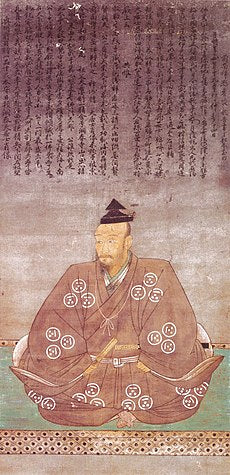A daimyo or daimio (大名, daimyō, lit. "great name") is a Japanese noble title.
This term refers to the main provincial governors from the military class who ruled Japan under the shogun, from the Muromachi (1336-1573), to the Edo (1603-1868) period.
Daimyo History

From the prestigious shugo (provincial governors) of the Muromachi period, through the Sengoku period, to the daimyos of the Edo period, this title would have a long and varied history.
Before the Muromachi period, however, the title myōden (名田) was more commonly used to designate large estate owners. These were then divided into kokushu (国主, governing at least one province), ryōshu (領主, governing lesser territory) and jōshu (城主, governors of castles).
These daimyos fought constant wars with the aim of expanding their territories. In the fifteenth century, during the unrest in the country, many shugo (守護) appropriated land and took the title of shugo-daimyō (守護大名), building castles to defend themselves against the expansionist designs of their neighbors. They were not pacified until after the battle of Sekigahara in 1600.
In the Edo period, the term daimyo was applied to about two hundred princes or great lords of estates whose annual income equaled or exceeded 10,000 koku (or about 1,500 tons) of rice. Those with less income were referred to as shōmyō (小名, "little name").
Daimyos fell into several categories:
- the shinpan daimyō (親藩大名), belonging to the Tokugawa family;
- the fudai daimyō (譜代大名), personally attached to the Tokugawa shogun;
- the tozama daimyō (外様大名 or "outside" daimyo), rallied to the bakufu.
The daimyos, while having some autonomy, were nonetheless subject to particular rules, mostly codified in bushido, and had to follow the law of the warrior houses (武家, buke).
Among other obligations, they had to maintain a residence in Edo, stay there every other year (or six months a year) and leave their families and vassals as hostages. The daimyo's journey of paying homage to his shōgun in Edo was called the daimyō-gyōretsu (大名行列), i.e., the "procession of lords."
From 1639, they were no longer allowed to build castles and ocean-going ships, and had to ensure that Christianity was banned from their territories.
At the time of the Meiji Restoration in 1868, some daimyos were appointed governors of their provinces (then called "han", 藩), but in 1871 all han were abolished and the territory of Japan divided into prefectures (県, ken). The former daimyos were then pensioned by the government and forced to reside in Tokyo.
Some known daimyo families: Date, Nabeshima, Imagawa, Mori, etc.


